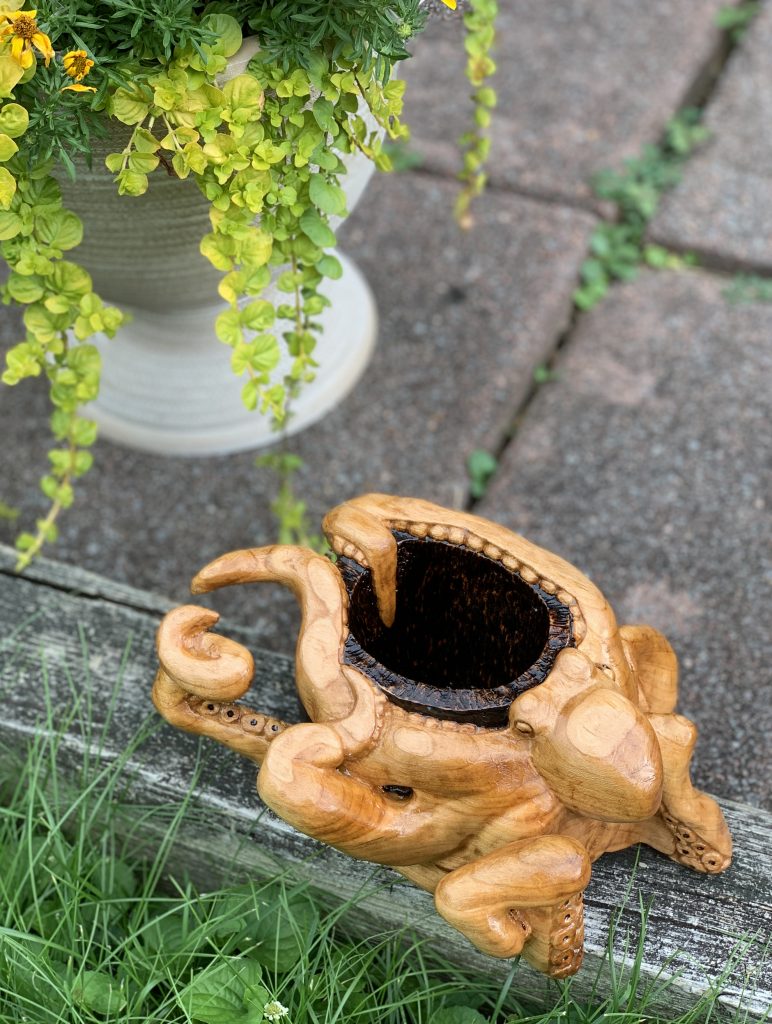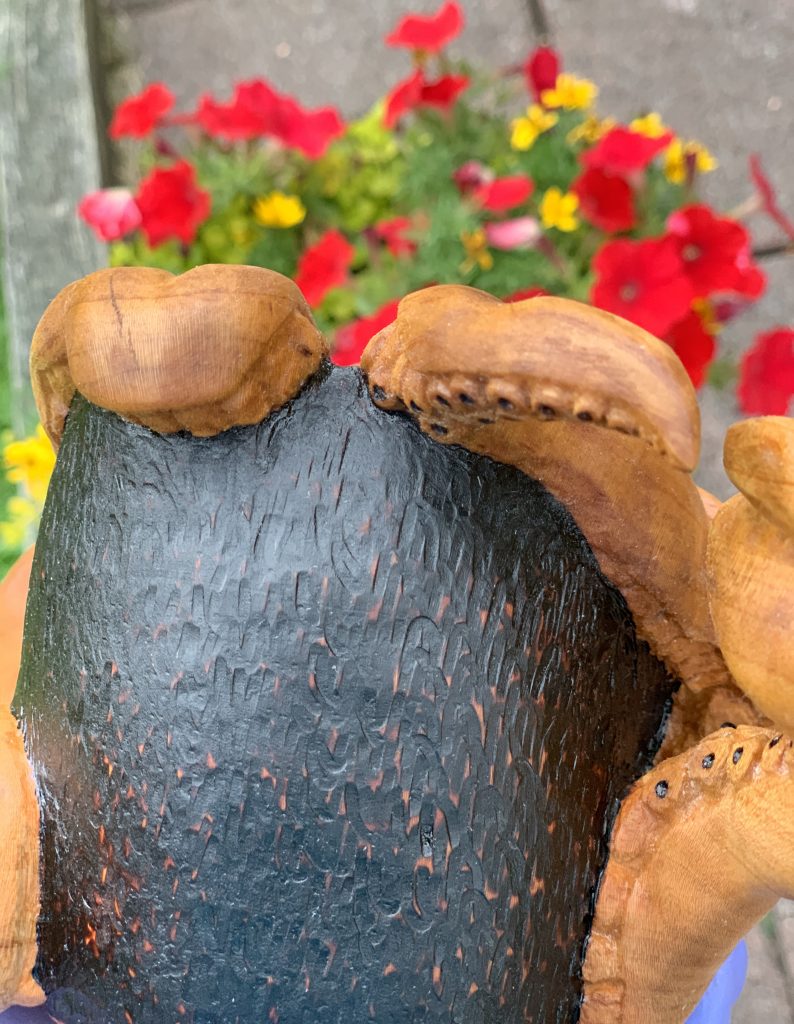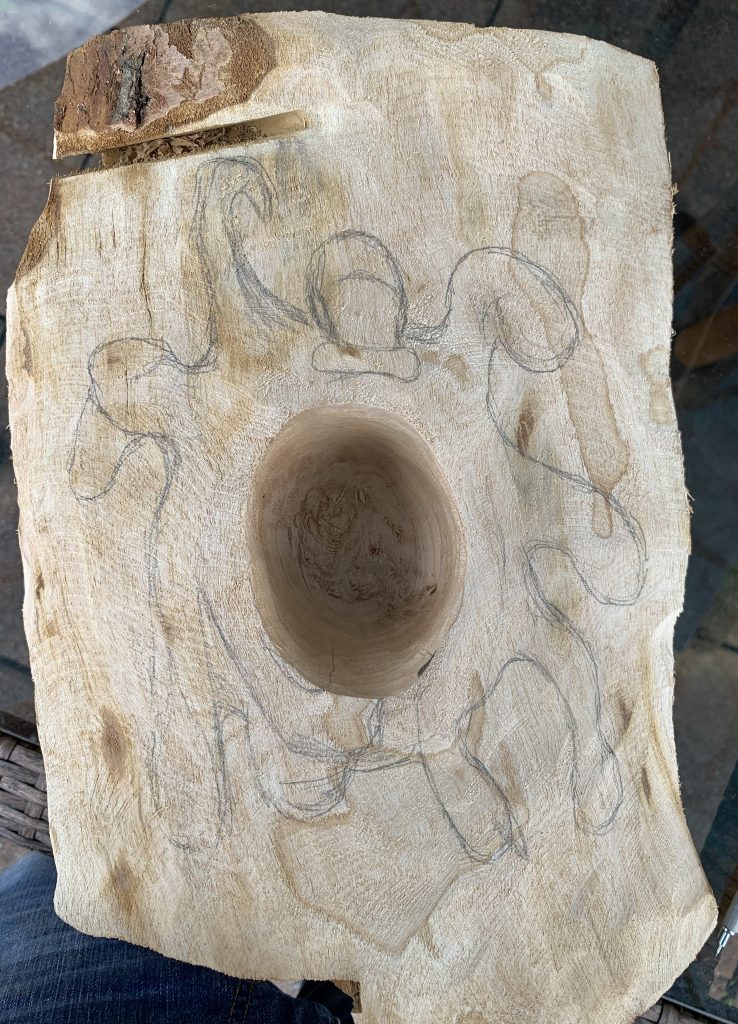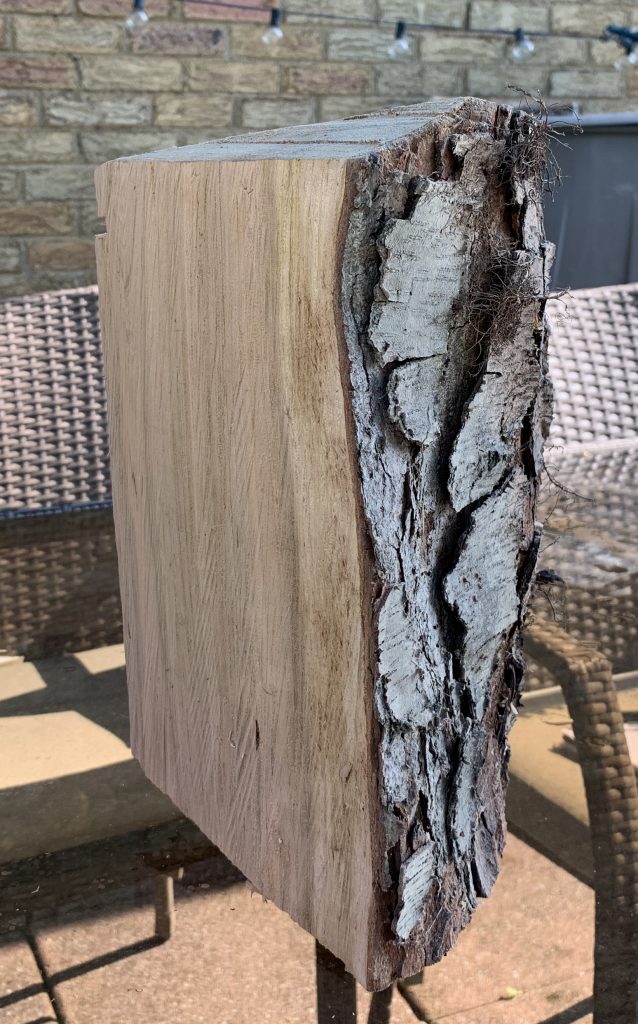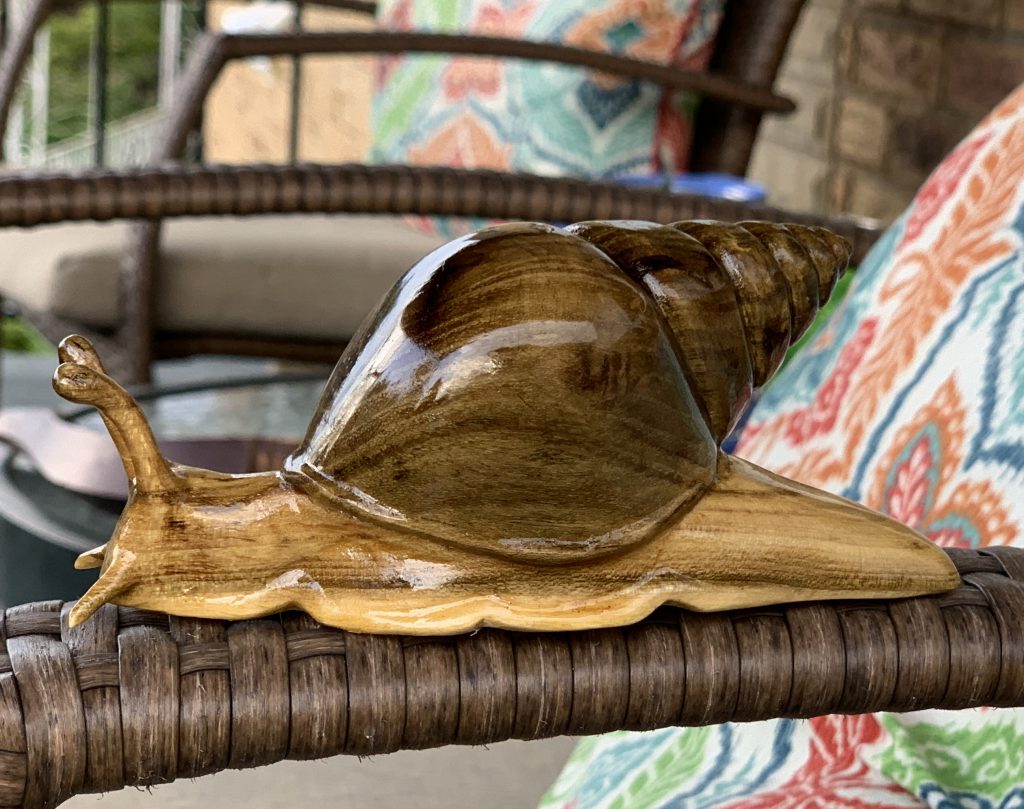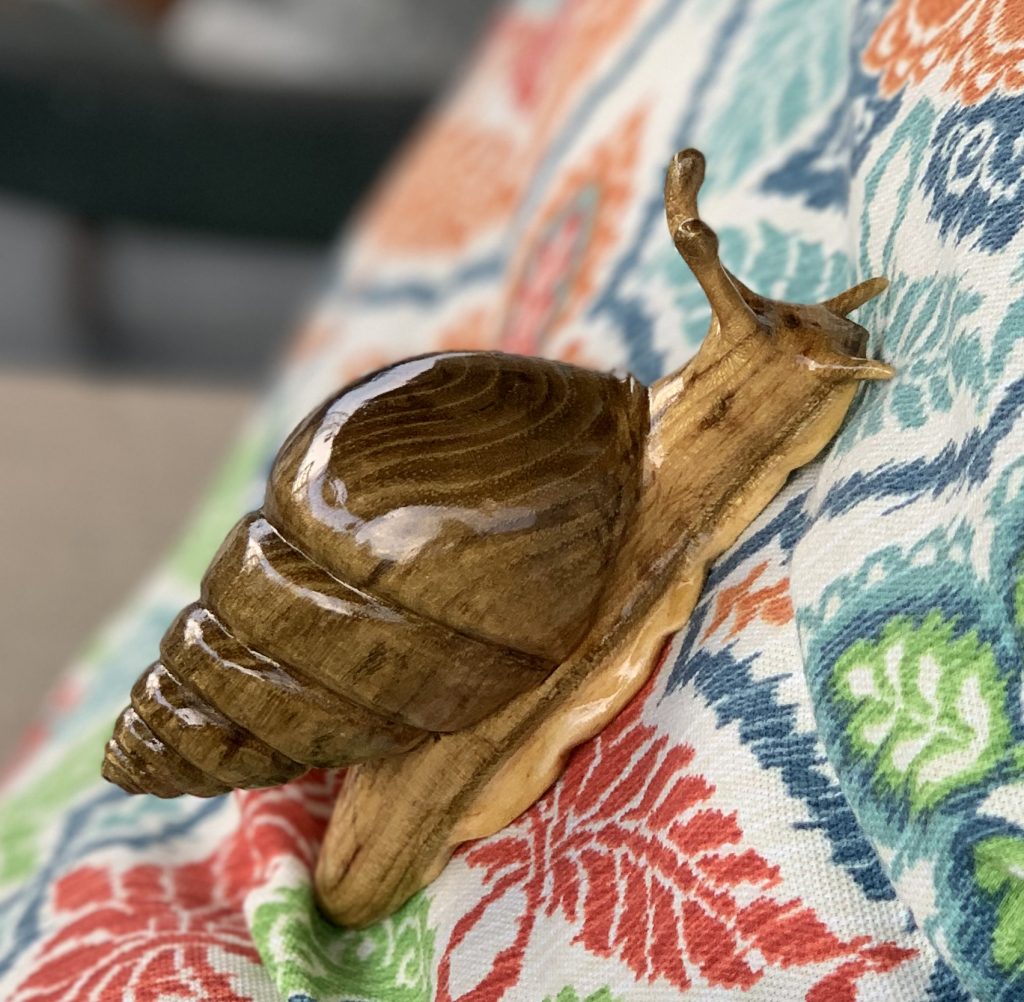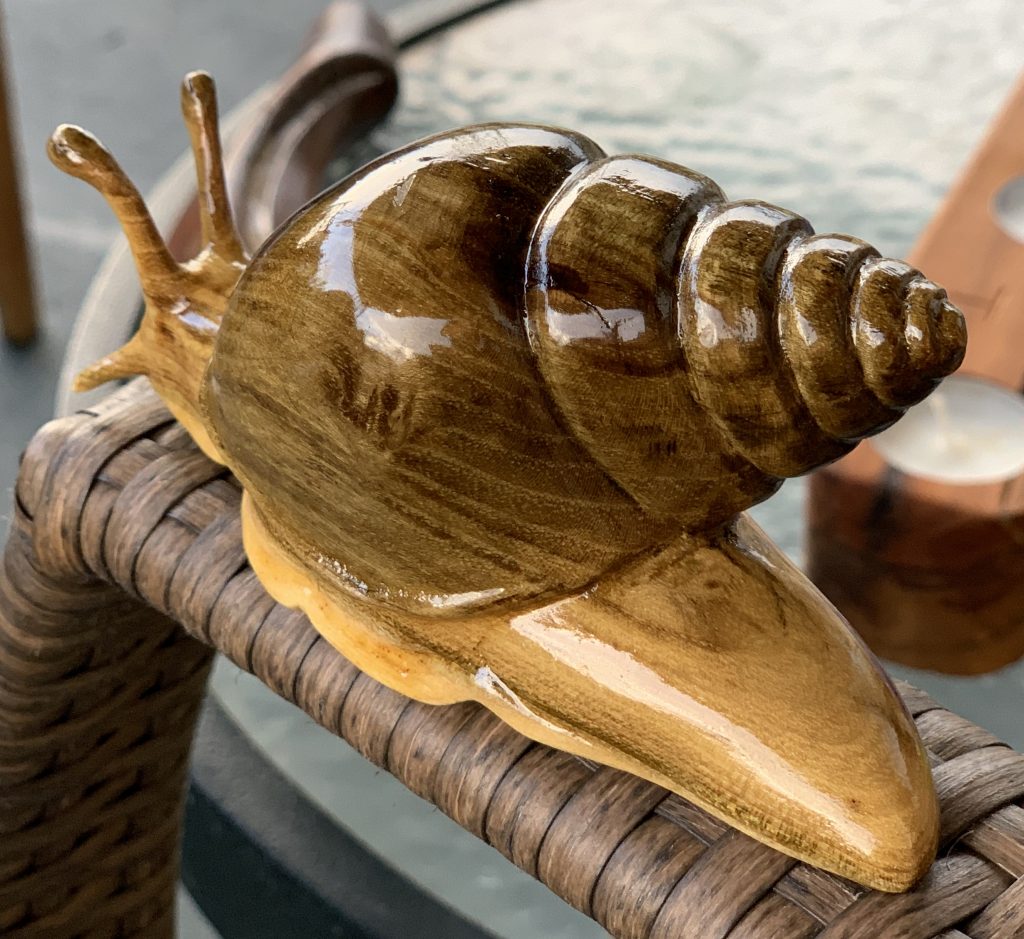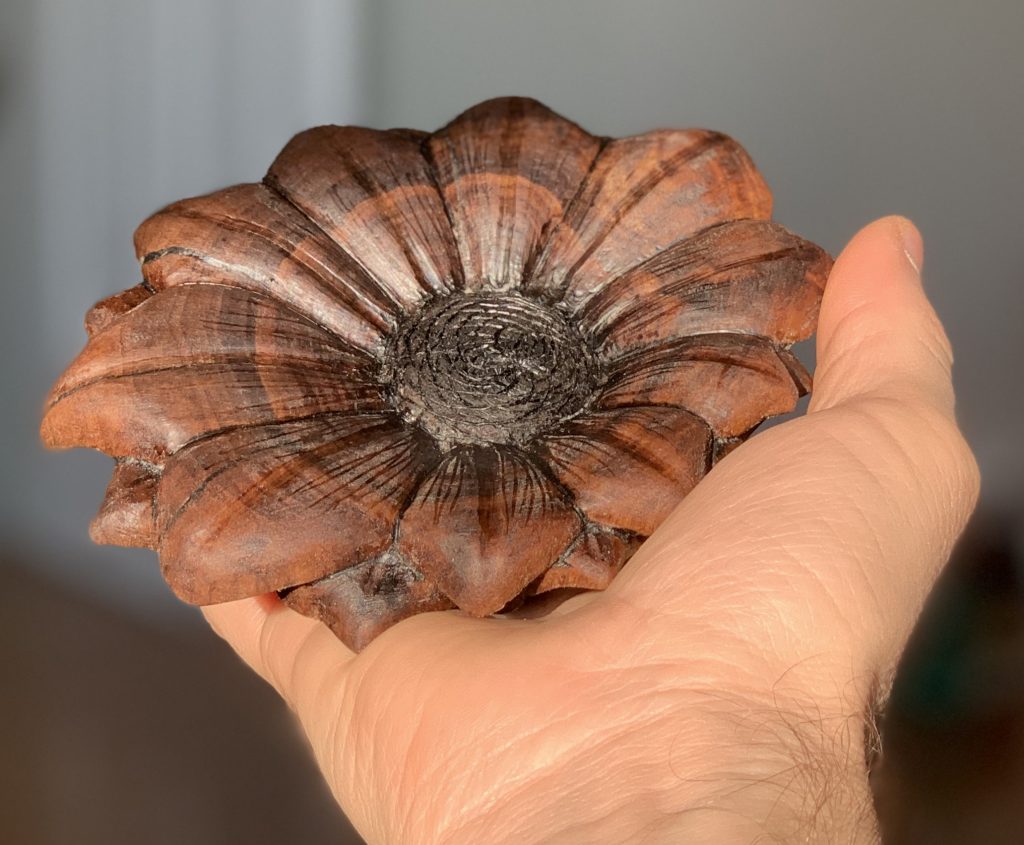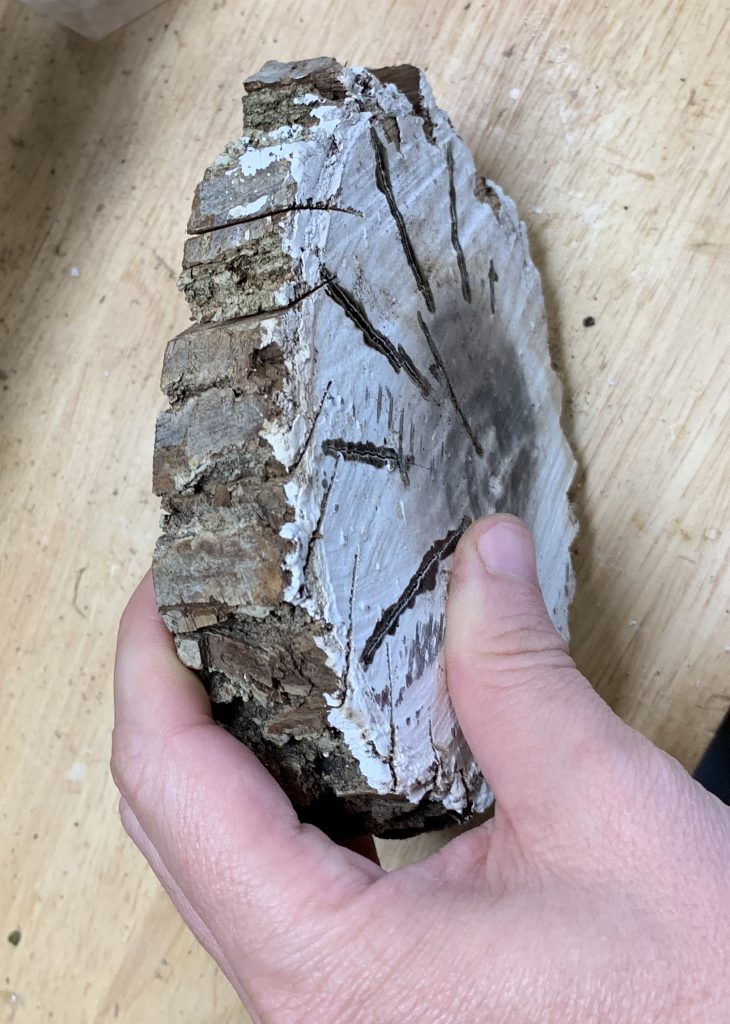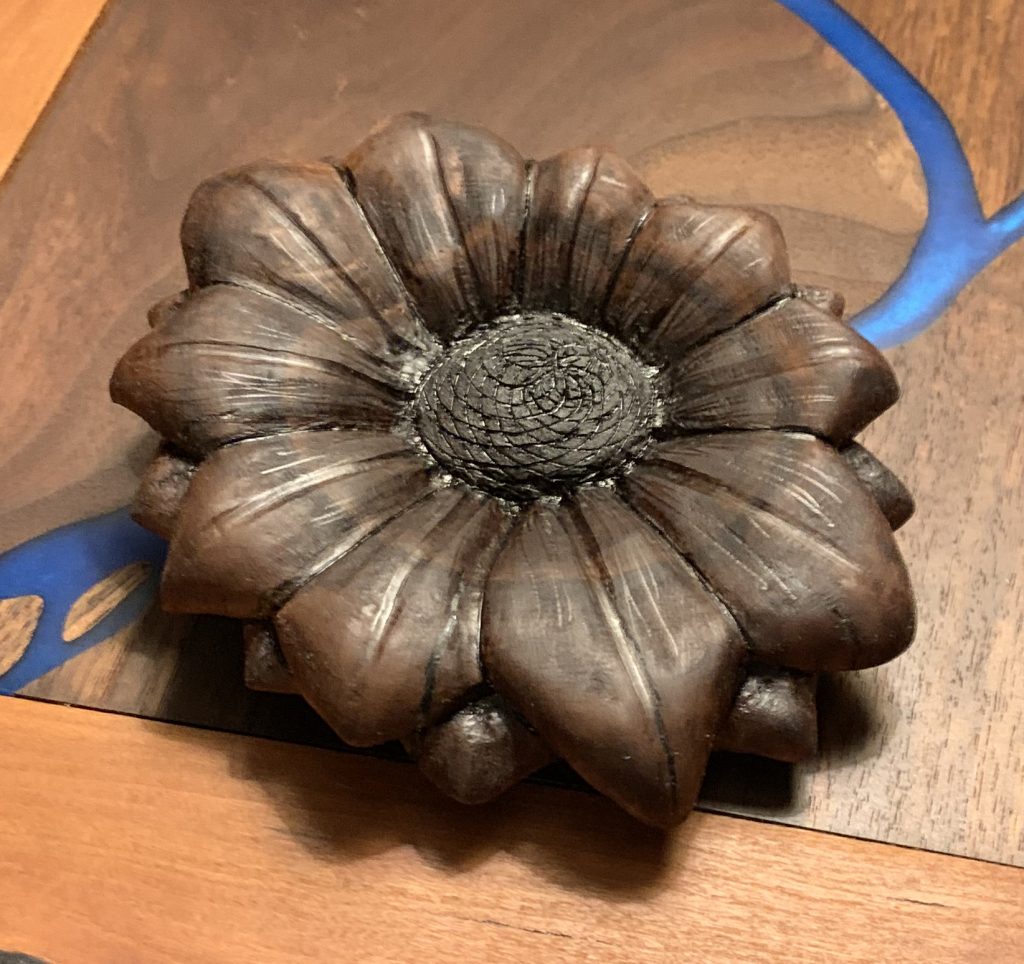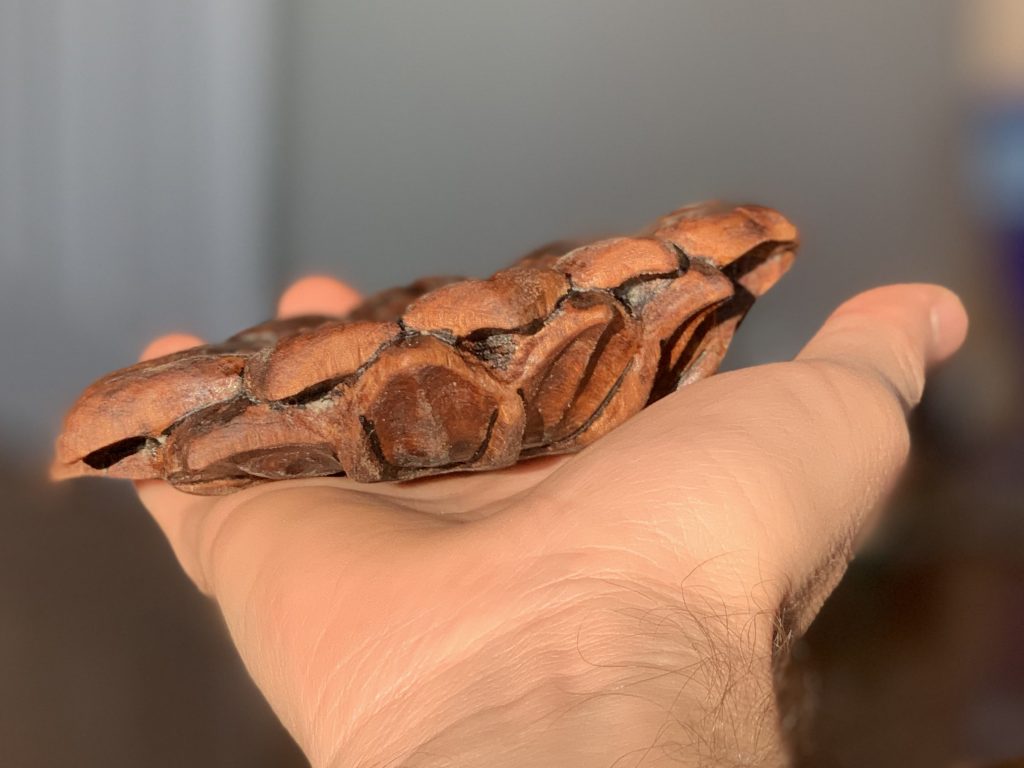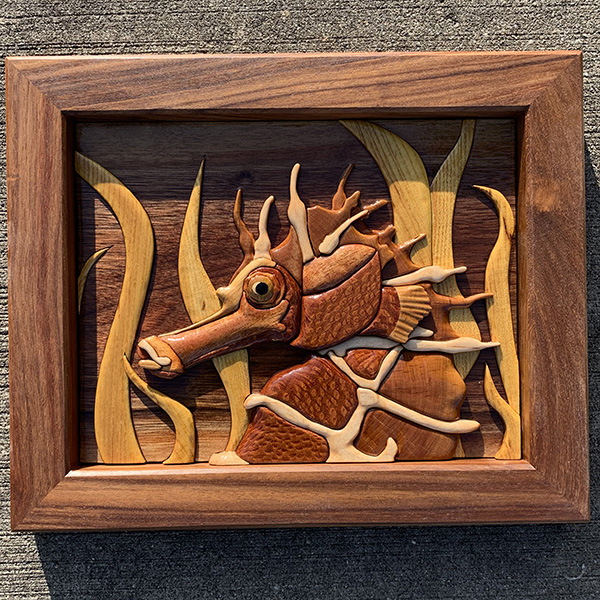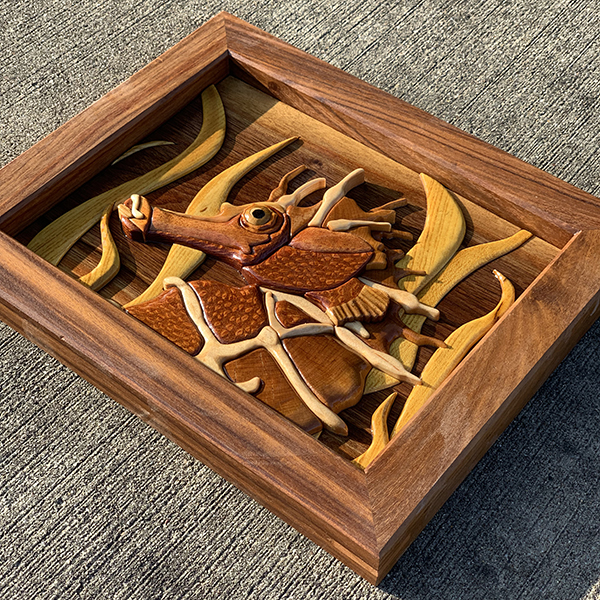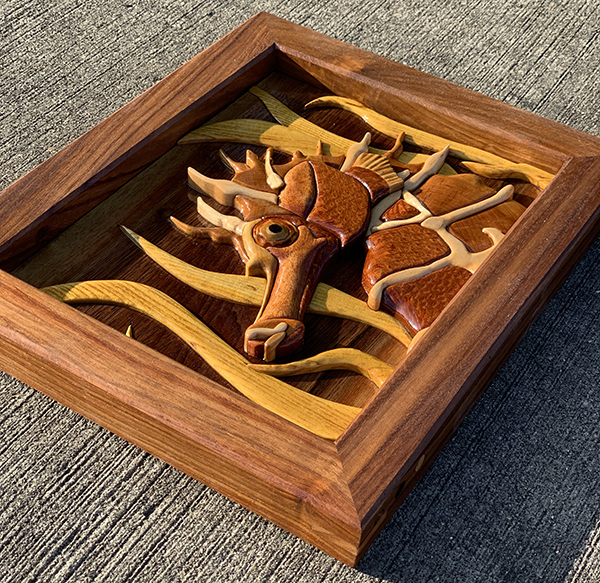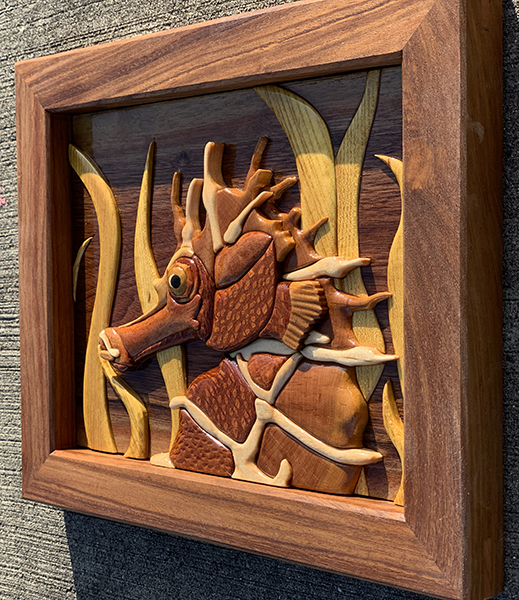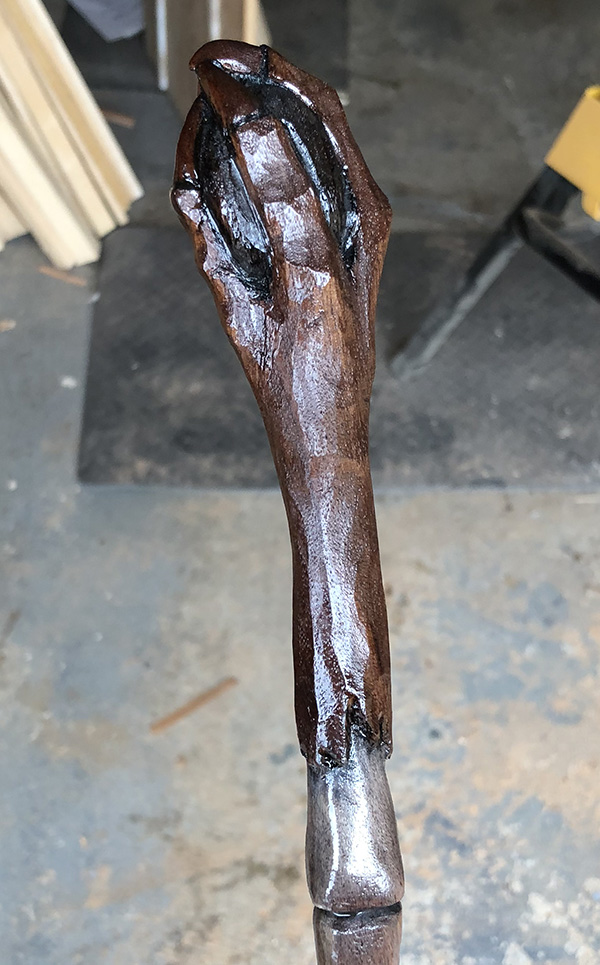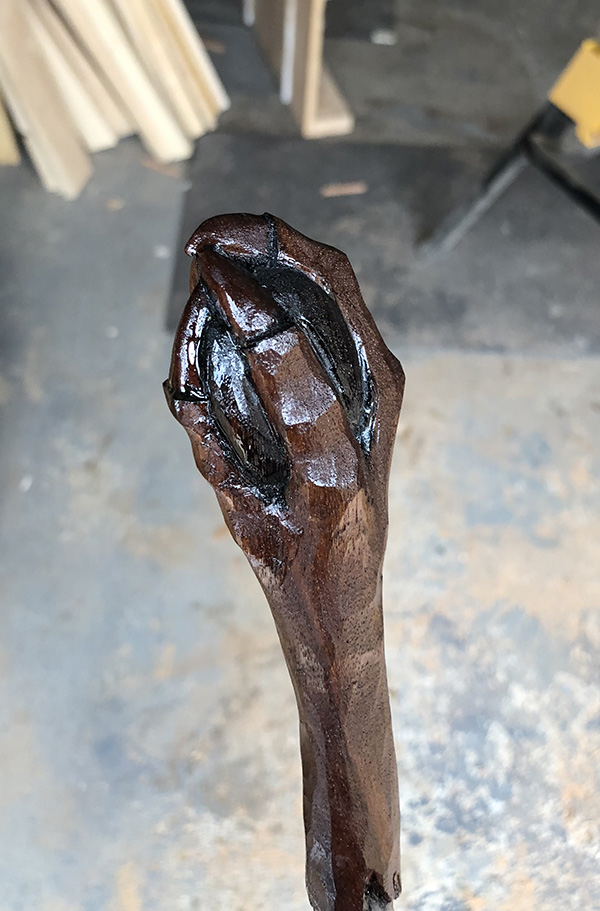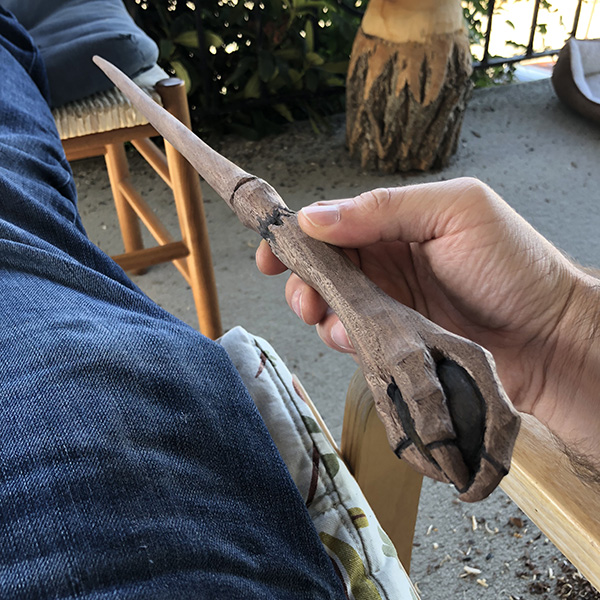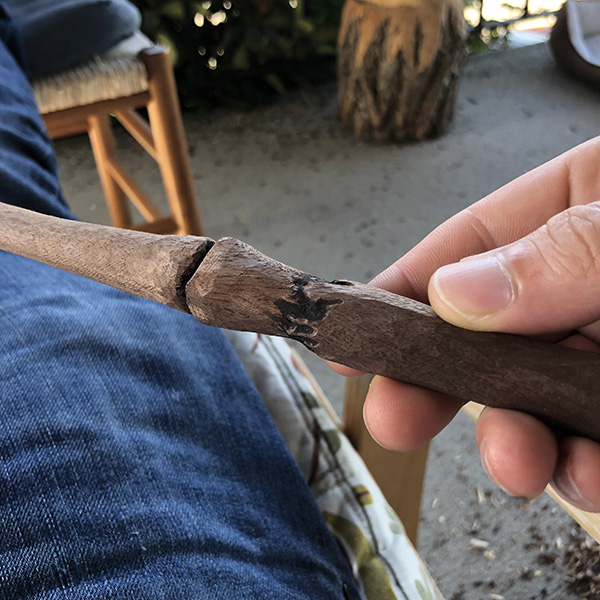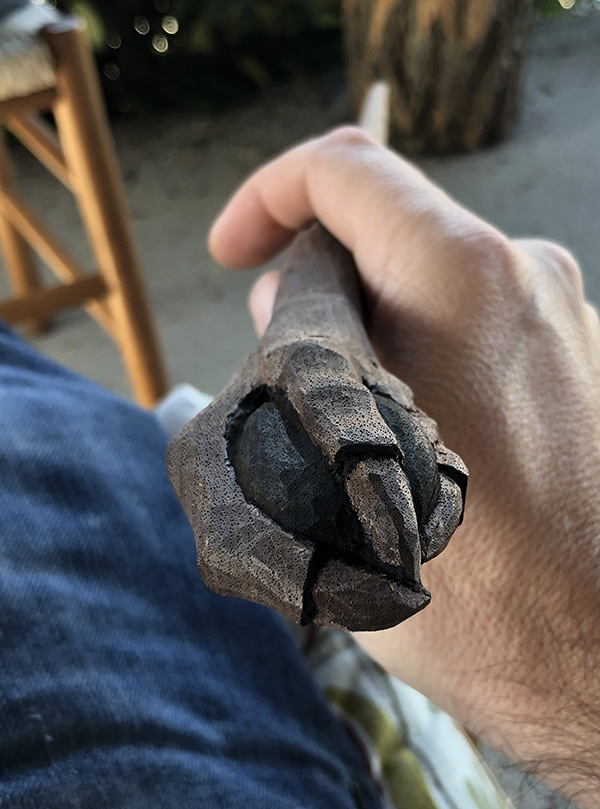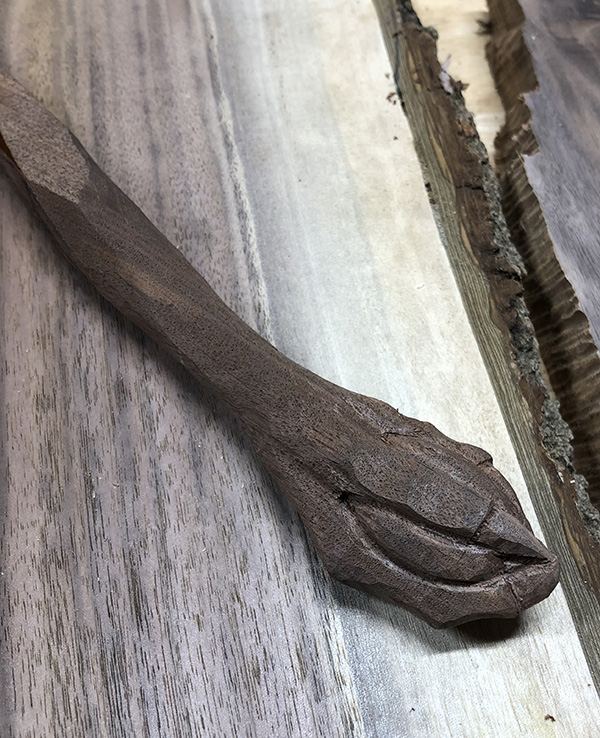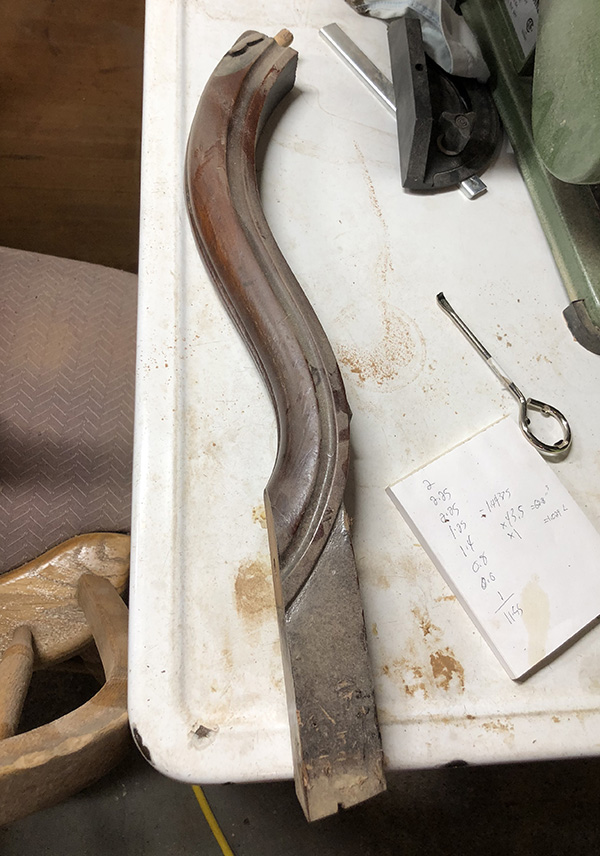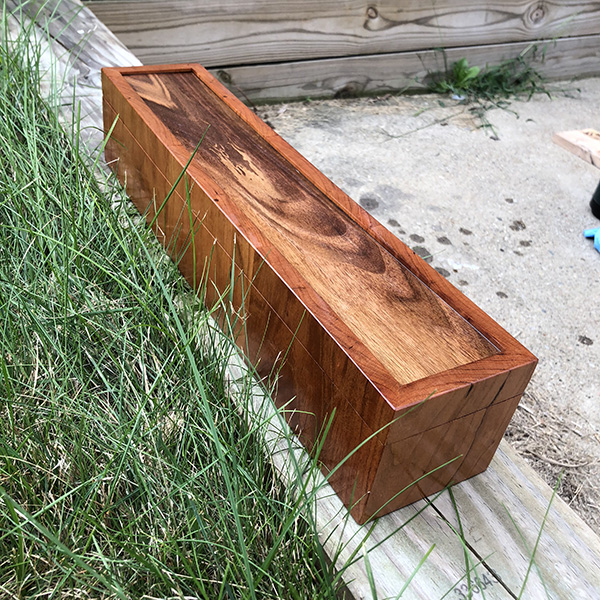Carved Octopus Bowl
Octopus bowl hand-carved from cherry firewood
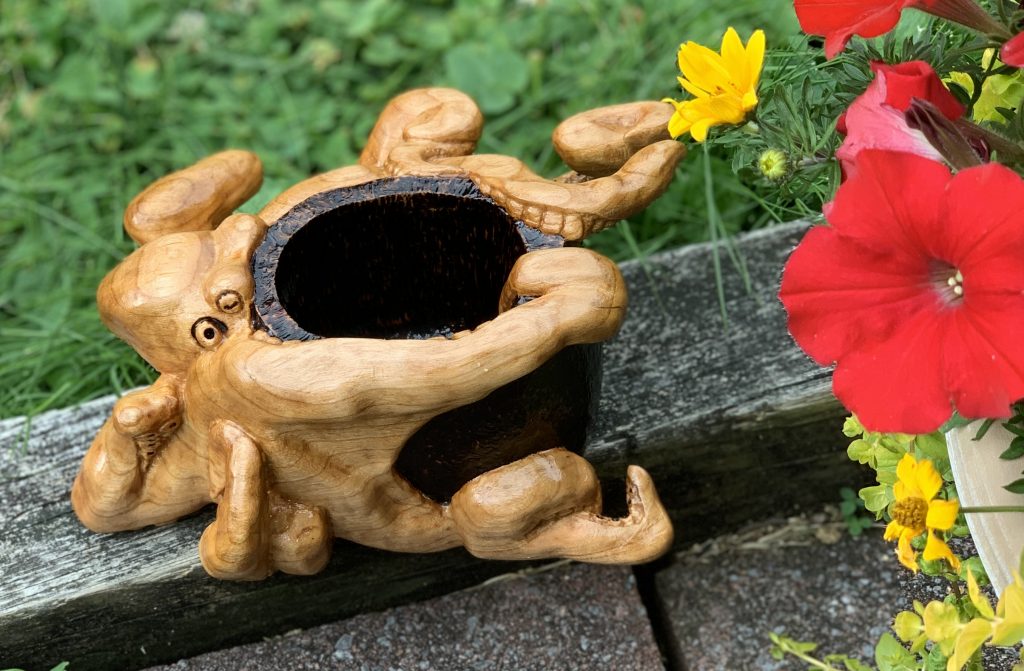
This thing started out just as an excuse to 1) finally use my Xmas gifts from @tamarynart (an @arbortechie minicarver and bowl gouge) and 2) just carve something random outside from a chunk of cherry firewood I had lying around. I also used pretty much all of my @saburrtooth rotary burrs on this thing. It’s not the best thing I’ve carved – pretty lousy anatomical accuracy and the suckers aren’t nearly as detailed as I would have liked. But I just sort of sketched it as I went. After putting a couple weeks into it, I was ready to call it done. Overall, I’m pretty happy with how it turned out for a one-off bowl to hold the TV remotes in our “Lair”. 😂
